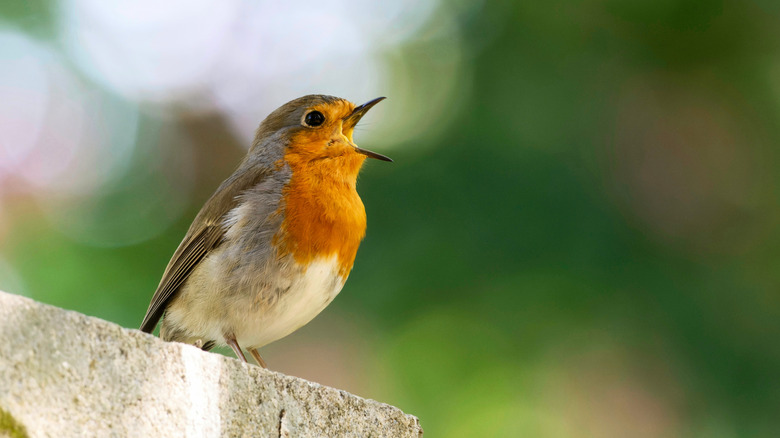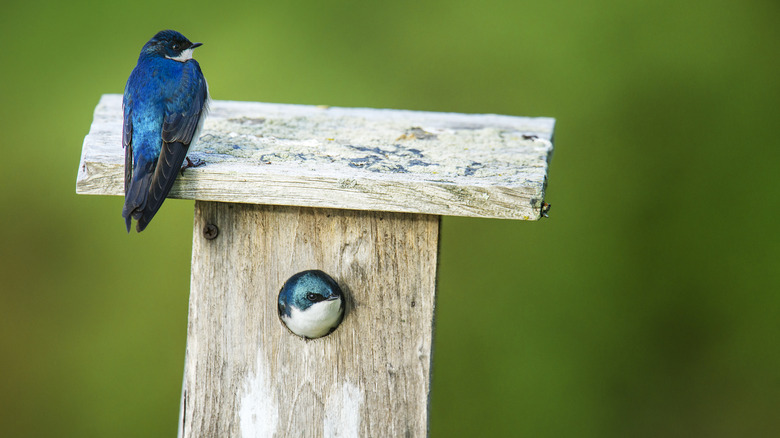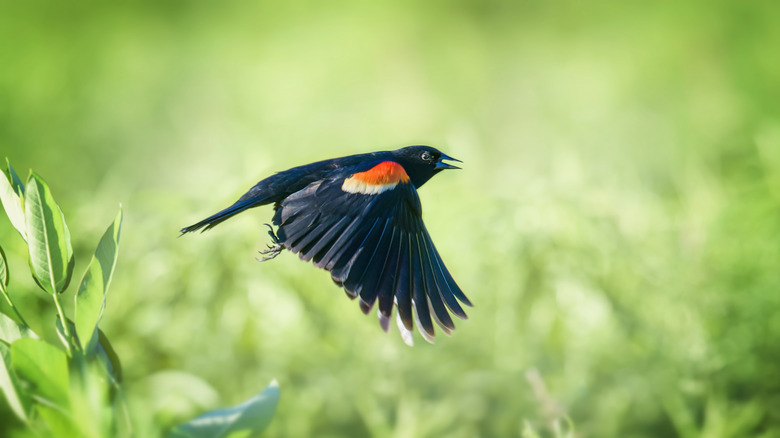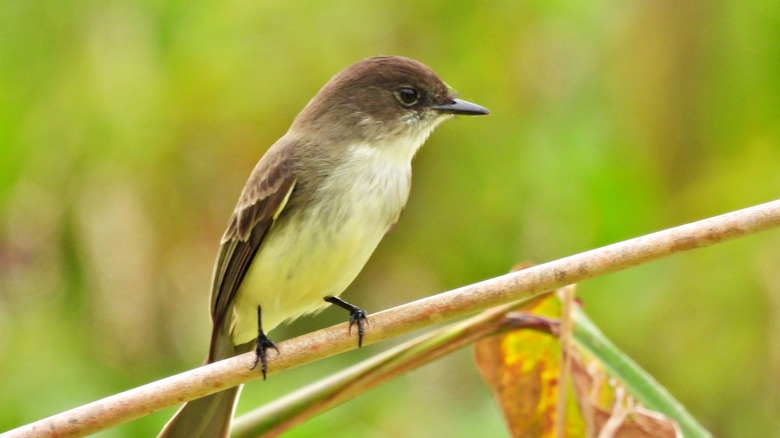As the gloomy winter months start to wane and spring sets in, you might notice the melodic chirping of birds perched in the trees—a clear indication that warmer weather has arrived. The onset of spring varies throughout the U.S., depending on regional climates, but American robins often serve as indicators of this change. Nonetheless, irrespective of where you live, early harbingers like tree swallows, red-winged blackbirds, and Eastern phoebes are usually seen heralding the end of winter—especially in eastern regions. Although these species tend to migrate earlier than others, keep in mind that American robins may stick around all year long in certain locales, becoming less vocal during colder periods.
More than just a pleasant relief for tired eyes after the long months of winter, spring’s arrival brings with it avian visitors who provide significant advantages to your locale. Many of these early-spring arrivals are insect-eating specialists that eliminate pesky bugs which might otherwise wreak havoc in your outdoor spaces. Serving as crucial components within nature’s framework, they assist in maintaining balance by controlling pest populations; certain species have been known to consume up to an insect every sixty seconds.
Outside of the
birds’ helpful role in managing pests
Observing their vibrant feathers and listening to their joyful melodies brings forth a sense of hope and rejuvenation, akin to the season of spring. Their appearance serves as a comforting sign that blossoms are imminent, and before long, our environment will be awash with colors and fresh vitality anew. No matter whether you’re a dedicated birder or merely looking forward to hosting some new winged guests around your dwelling, this offers an insightful glimpse into the avian species you can anticipate encountering right from the onset of spring.
Read more:
The Kinds of Birds You Desire in Your Garden
American Robins Come Back To The Region Or Show Up Again After Being Hidden

The American Robin serves as an early sign of spring and can frequently be seen when this season begins. Nonetheless, whether these birds remain all-year depends on your location; typically, they only move unless their food sources diminish significantly. For instance, in places like northern Canada, Robins head south primarily because finding adequate nutrition becomes challenging, not necessarily due to avoiding low temperatures. These birds often venture into the U.S., occasionally reaching even further down towards Mexico during migration periods. Throughout winter months, they gather in groups and roam around looking for nourishment. Despite appearing anew each warm period, some populations might merely shift habitats within regions—from open spaces back to forested zones—whereas others truly do travel great distances annually.
Robins display gray and brown feathers, along with darker shades on their heads and a vibrant orange chest. The distinction between males and females lies in the female’s slightly more faded head feathers, although they share comparable coloration overall. Both genders exhibit white-marked areas on their undersides and tail regions. Occasionally, one might encounter a robin adorned with white speckles across its back; this characteristic indicates leucism, a phenomenon impacting feather pigmentation.
draw robins into your garden
By meeting them at their eye level, essentially, utilizing a tray placed on the ground filled with crushed peanuts and seeds. Robins are particularly fond of apple slices, berries, and raisins, along with dried mealworms.
Tree Swallows Are Striking Spring Visitors

Adorned with stunning azure tail feathers, tree swallows become a delightful vision following the dreary days of winter as they dart through the sky, primarily feeding on insects. These birds boast shimmering plumage that transitions between shades of blue and bluish-green depending on how the light hits them. Nonetheless, their breast and underbelly remain pristine white. The males exhibit brighter hues, whereas females display additional browns across their upper bodies.
Categorized as short-to-medium distance migrants, tree swallows generally travel during the summertime, specifically between July and September. Throughout this period, groups may consist of hundreds of thousands of birds, performing spectacular aerial maneuvers as they move towards the southern parts of the United States, Mexico, and occasionally even further down into Central America. The tree swallows make their way back to their homes ahead of most other swallow species when spring arrives. Their ability to eat both insects and vegetation allows them to endure the chilly conditions at the start of spring. They begin returning to their nesting sites in the northern regions of the U.S. and Canada around March and April.
Tree swallows are the
kinds of birds you wish to have in your garden
Because they help with pest management. Given their heavy insect-based diet, they aren’t drawn to seeds like many other songbirds. Nonetheless, since they are cavity-nesters, you can lure them to your property for breeding purposes by installing a nest box. Additionally, attracting tree swallows can also be achieved by incorporating a water element, which enhances their chances of finding more insects nearby.
The Melody of Red-Winged Blackbirds Echoes Through the Air from Above

Red-winged blackbirds get their moniker from their predominantly black feathers adorned with red and yellow patches on their wings. Male specimens stand out with sleek, deep-black plumage featuring subtle dark-brown streaking across their bodies. In contrast, female birds exhibit yellow coloration beneath their beaks and sometimes have faint white eyebrows; male birds’ beaks remain entirely black. Similar to American robins, these creatures can inhabit locations year-round, frequently found close to marshlands or water bodies. Populations located further north might migrate towards milder climates like parts of Mexico during colder months, whereas individuals living in temperate zones generally stay put. During migration periods, particularly noticeable arrivals occur each spring when males reclaim dominant positions atop high spots using loud calls to assert control over territories. These species display strong protective behaviors regarding their domain, as evidenced by one male potentially taking up to ten different mates within breeding seasons.
Red-winged blackbirds, which typically feed on the ground, consume seeds and grains like those scattered about. To draw these birds, sprinkle some broken peanuts, sunflower hearts, oatmeal, and cracked maize onto the ground; as they perch atop telephone lines or fences, ready to descend, this could entice them over. While feeding on such offerings, they might supplement their diet with insects—such as beetles and grasshoppers—as well as arachnids. Suet cages can effectively lure them too, although one should know that these birds tend to dominate at feeders, often intimidating others momentarily before moving aside.
Eastern Phoebes Are a Joyful Sign of Spring in the Eastern Region

In the eastern part of the U.S., the arrival of the Eastern Phoebe heralds the coming of spring, even though it doesn’t boast the vibrant hues seen in birds like the American Robin or Tree Swallow. This medium-distance migratory bird opts to spend winter farther north compared to numerous others, thus making an appearance sooner when spring arrives. You can easily identify them by looking out for a small, grey-hued bird known for twitching its tail often. Its plumage has a subdued palette—ranging from shades of brown to gray—with darker tones predominantly found around the head area, setting off a stark contrast against its pale underparts. The bird’s call mimics its name closely; you’ll hear it produce a gentle “fee-bee” melody, modulating the tonal quality each time it repeats itself consecutively.
Eastern phoebes are insect-eaters that sally out into the air from their resting spot to capture food. While they primarily feed on flies, they also readily consume bigger bugs. You can attract these birds to help control pesky insects like ticks or wasps by offering a suitable perch for them to observe and launch attacks from. The Eastern phoebe demonstrates remarkable hunting skills, able to snag about 1.21 insects every minute, based on reports.
National Park Service
(NPS) Although insects make up most of their diet, they do consume berries, including those from the Virginia creeper. Providing bird baths or ponds might attract these creatures, allowing them to spot nearby insect activities more easily. Additionally, think about installing a nesting box and mounting it beneath an eave, ideally positioned between 3 to 16 feet above ground level.
Liked this article? Subscribe now for exclusive access to professional home tips, step-by-step DIY guides, and creative design ideas from the
House Digest newsletter
!
Read the
Original Article from House Digest
.








